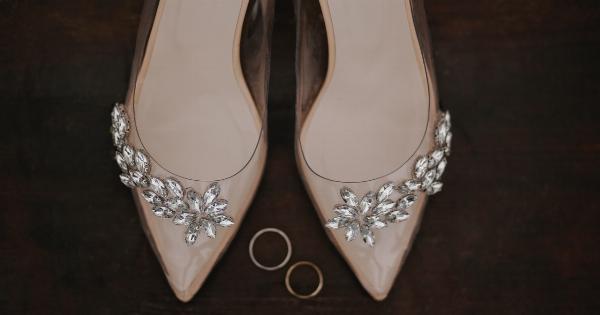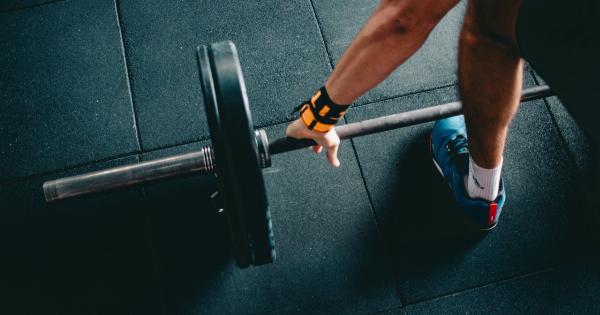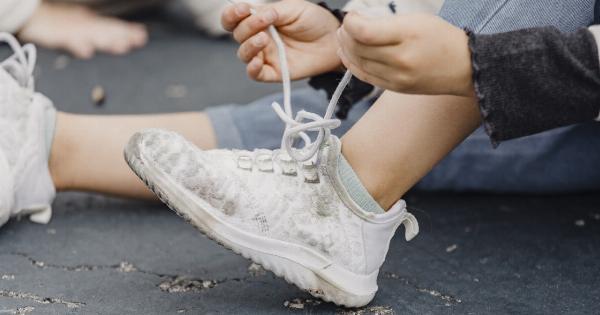High heels can be both stylish and elegant, but they often come with a price – pain and discomfort.
Many women dread wearing heels for this reason, but there are some clever hacks that can help limit the pain while still allowing you to rock those fabulous heels. In this article, we will explore three effective hacks that can make wearing high heels a comfortable experience.
1. Choose the Right Size
One of the most common mistakes women make when buying high heels is choosing the wrong size. Ill-fitting shoes can cause immense pain and discomfort.
Ensure you know your correct shoe size and take the time to try on different brands and styles to find the perfect fit. Keep in mind that shoe sizes can vary between brands, so try on multiple sizes to find the one that feels the most comfortable.
2. Invest in Quality Shoes
The quality of high heels can greatly impact the degree of discomfort experienced while wearing them. It is worth investing in well-made shoes that are designed to provide support and comfort.
Look for brands known for their quality craftsmanship and materials. While high-end shoes may be more expensive, they often come with features that make walking and standing for extended periods feel less painful, such as extra cushioning and arch support.
3. Use Insoles for Extra Support
Insoles can make a world of difference when it comes to comfort in high heels. There are various types of insoles available specifically designed for heels, such as gel or foam inserts.
These inserts provide extra cushioning and support for the feet, reducing the pressure on certain areas and minimizing discomfort. Additionally, some insoles can help with arch support, distributing weight more evenly and reducing strain on the balls of your feet.
4. Stretch and Strengthen Your Feet
Wearing high heels can put significant strain on your feet and calves. To mitigate this, it is important to take care of your feet through stretching and strengthening exercises.
Regularly stretching your feet and calf muscles can help prevent stiffness and pain. Additionally, exercises like toe curls and heel raises can strengthen the muscles and improve stability, making it easier to walk and stand in heels for longer periods.
5. Opt for Thicker Heels
Thin stiletto heels may look trendy, but they can be particularly painful to wear for extended periods. Opting for heels with thicker, more stable heels can help distribute your body weight more evenly, reducing pressure on specific points of your feet.
Chunky block heels or wedges are great alternatives that provide both fashion and comfort. The wider base of these heels offers more stability and reduces the strain on the balls of your feet.
6. Choose Heels with Straps
Heels with ankle straps or T-straps can provide extra support and stability. These straps help keep your feet in place, preventing them from slipping forward and causing discomfort.
Additionally, straps can alleviate pressure on the balls of your feet by distributing the weight more evenly. When shopping for high heels, consider trying on styles with straps to see if they provide better support and comfort.
7. Pad Problematic Areas
If you have specific areas of your feet that are prone to pain or blisters when wearing heels, consider using padding to cushion those areas.
There are specialized gel pads or cushions available that can be applied to areas such as the back of the heel or the balls of the feet. These pads provide extra comfort and protection, minimizing friction and preventing painful blisters from forming.
8. Take Breaks
Walking or standing in high heels for an extended period can be taxing on your feet. It is important to give them regular breaks to alleviate any discomfort and prevent excessive pain.
Whenever possible, take short breaks by sitting down or switching to more comfortable shoes. This will give your feet a chance to rest and recover, reducing the overall pain and fatigue associated with wearing high heels.
9. Wear Heels on Carpeted Surfaces
The surface you walk on can also contribute to the level of pain experienced while wearing high heels. Opting for carpeted surfaces or using rugs at home or in the office can provide better cushioning and reduce the impact on your feet.
Hard surfaces like concrete or hardwood floors can transmit more shock to your feet, leading to increased discomfort. Whenever feasible, choose carpeted areas to walk on when wearing heels.
10. Gradually Increase Heel Height
If you’re new to wearing high heels or find them particularly uncomfortable, it’s advisable to start with lower heel heights and gradually work your way up.
By gradually increasing the height, your feet and calf muscles have time to adjust and strengthen. This can help reduce pain and discomfort associated with wearing higher heels. It’s important to listen to your body and avoid pushing yourself too quickly to avoid unnecessary pain.
Conclusion
Wearing high heels doesn’t have to be a painful experience.
By following these three hacks – choosing the right size, investing in quality shoes, and using insoles for extra support – you can enjoy wearing high heels without sacrificing comfort.
Additionally, stretching and strengthening exercises, opting for thicker heels or strapped styles, padding problematic areas, taking breaks, walking on carpeted surfaces, and gradually increasing heel height can all contribute to minimizing pain and discomfort while wearing high heels. Remember to prioritize your comfort, and don’t be afraid to experiment with different techniques to find what works best for you.

























